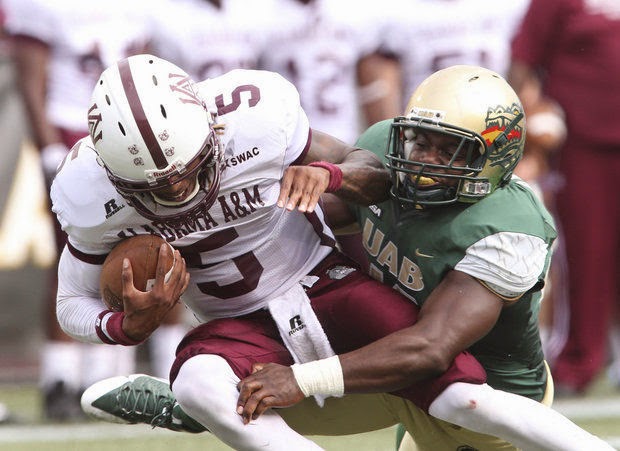 |
| UAB beat Alabama A&M 41-14 in September. (AL.com photo) |
By Steven J. Gaither
After days of reports and speculation, the University of Alabama-Birmingham announced on Tuesday that it is cutting its football program, sending shockwaves through college football.
“The Athletic Department faces many challenges given the rapidly evolving NCAA landscape and soaring operating costs, which place extreme pressure and a growing financial burden on programs like UAB’s. Costs are continuously spiraling upwards driven by cost-of-attendance payments to players, meals, equipment, facilities, coaches, travel and more,” the university’s statement read.
The university estimated that over the next five years, it would have had to invest nearly $50 million over the next five years to keep its FBS program going. President Ray Watts said the university just wasn’t willing to make that happen.
The question we’re asking ourselves: If UAB can’t afford to keep its football program, what does the future hold for HBCUs?
UAB’s 2013 endowment was listed at over $392 million dollars, while fellow in-state D1 member Alabama State recently finished its new stadium despite an endowment of $73.5 million. (Keep in mind, UAB’s program operated at the FBS level, which allowed for more football scholarships than the FCS does.)
Earlier this year, a report by HBCU Money stated that FCS HBCUs (MEAC/SWAC/TSU) spend approximately $.80 on athletics for every $1.00 spent on research while comparable PWIs spent a much smaller percentage on athletics compared to research.
Many HBCUs are struggling for survival in the current economic climate. Earlier this year, South Carolina State reported it was more than $13 million dollars in the red, and there was talk of cutting athletic programs, including the men’s basketball team. St. Augustine’s University was recently sued by the contractor who built its football stadium after he claimed the university owed him more than $700,000.
While cutting football may be a stretch for the majority of HBCUs, many have expressed the need for them to re-examine their priorities when it comes to spending in athletics.
A few schools are financially solvent enough to stay where they are, while others might find themselves better off moving down a level in competition a la Winston-Salem State. That includes Division II HBCUs as well as Division I.
The reality is no one-size-fits-all cure exists. Still, the UAB football program should serve as a caution flag for administrators at many schools.
Follow HBCU Gameday on Twitter and Like us on Facebook for the latest news, analysis and commentary on HBCUs and sports.
This article was all about nothing. No new grown broken here. : (